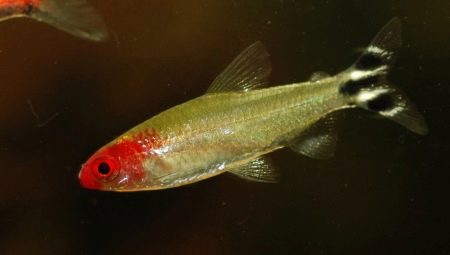Most aquarists like to have a lot of algae in their artificial home pond - they help create a biotype of lakes and warm rivers. This has the most beneficial effect on its inhabitants. In such aquariums they often contain rhodostomuses - small fish that differ in a livable and peaceful nature. Due to their covetousness, they coexist beautifully with many other representatives of the aquarium fauna.
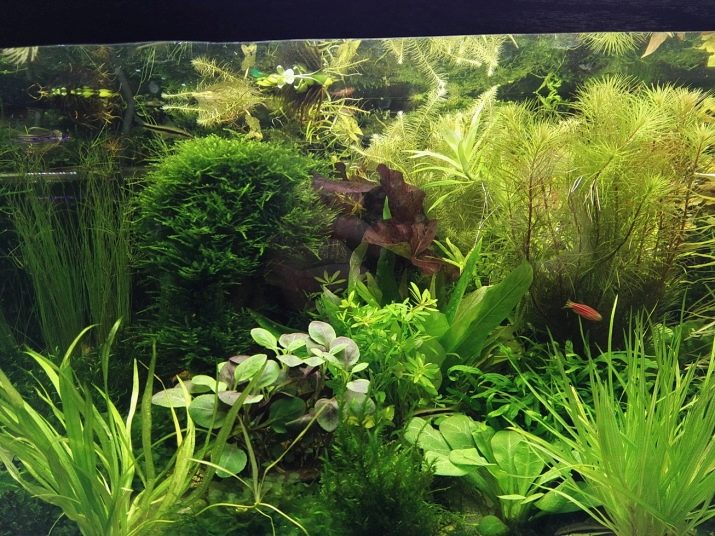
Description
Like most haracin fish, rhodostomuses are found in the wild in South America in small tributaries of the Amazon, as well as in the rivers of Colombia and in Brazil. For the first time, representatives of this species were described at the end of the last century - then they were called the diamond rhodostomus, or red-nosed tetra.
When creating a comfortable microclimate, this fish can live in captivity. The aquarium variety is not particularly attractive and decorative.
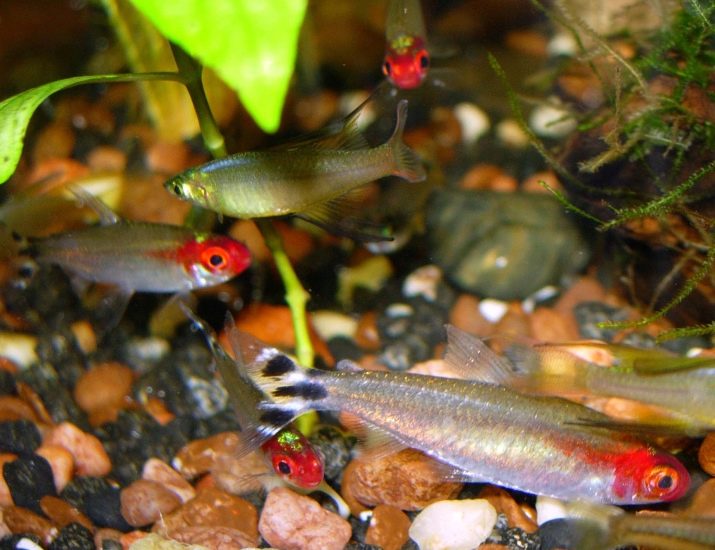
She has a dense elongated translucent body, slightly cast with a neon color. The head is reddish in color, and at the moment when the fish is stressed, the shade becomes faded. Caudal fin black and white - three dark stripes are located between four light ones.
Under favorable conditions, the nasal part acquires a reddish-ruby hue, so by the color of the nasal part you can safely judge the condition of the pets and the quality of their conditions, since any lightening of the tone indicates possible problems that require immediate adjustment.
In the aquarium, rhodostomuses live up to 5-6 years.

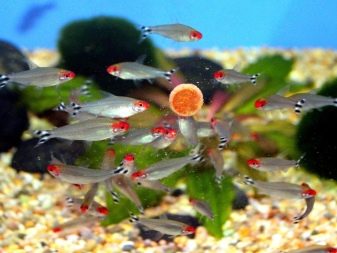
Content Features
Rhodostomus is a rather capricious and demanding fish, therefore only experienced breeders can keep it at home. To create a favorable microenvironment for the red-nosed tetra, it is necessary to carefully monitor the purity and freshness of water, the parameters of its hardness, acidity and temperature.
Keep in mind that this pet is extremely sensitive to the presence of ammonia, nitrates and nitrites in the aquarium.
Let us dwell on the features of the content of rhodostomuses.
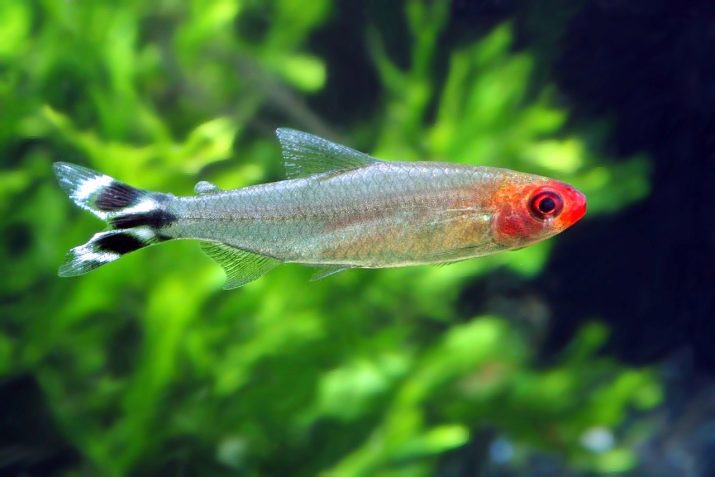
Aquarium
If you are determined to decorate your aquarium with rhodostomuses, then you need to know that these fish are schooling, so you will have to create a group of 7-9 fish. You will need a tank with a volume of 60 liters or more, moreover, it must be overpriced, since these fish prefer to swim in the middle layers of water.
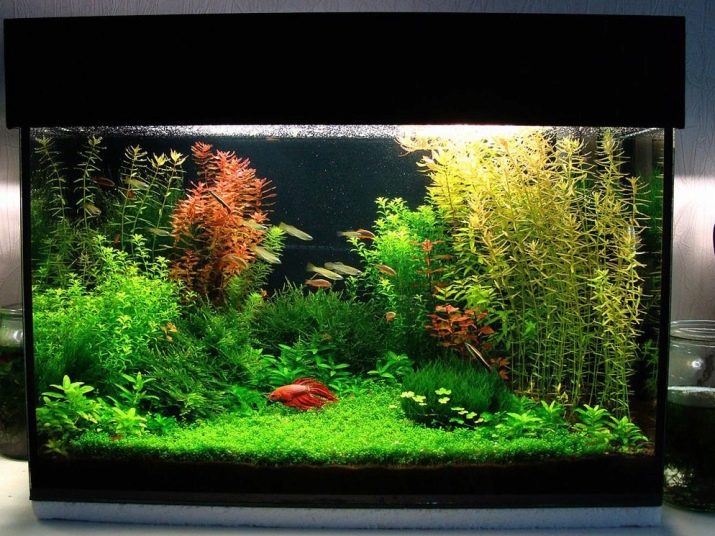
Priming
The type of soil is not of fundamental importance, but it is important that it is suitable for the growth of algae and other aquatic plants. Individual aquarists prefer dark substrates - against their background, neon-silver red-nosed pets look especially impressive and are always in a good light.
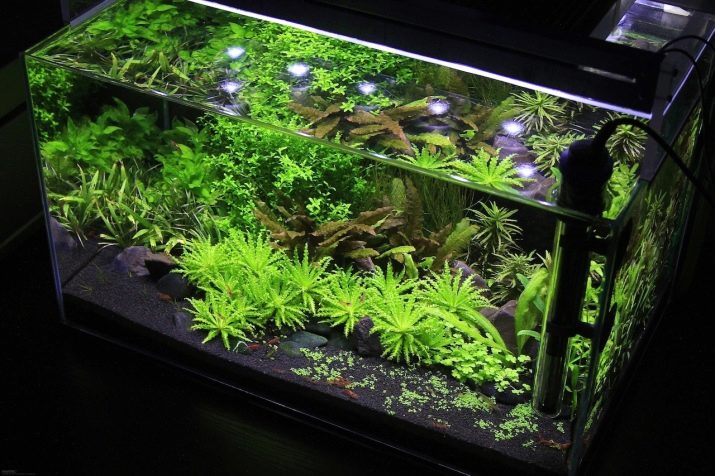
Vegetation
Rhodostomuses prefer to spend time in the shade of water thickets. The choice of aquarium flora should be done in favor of sagittarius, limnophil, as well as echinodorus.
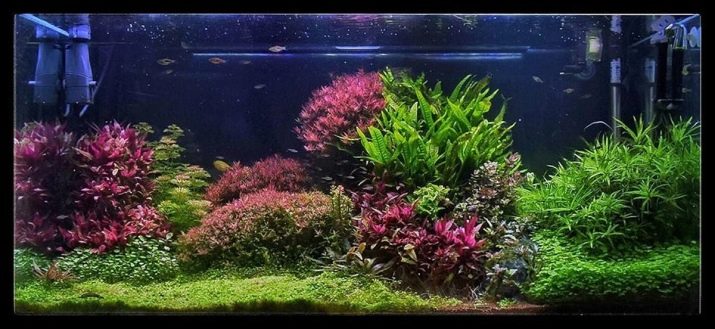
Water
Water characteristics should be as close to natural as possible, that is, have neutral averaged values. The optimum temperature for the red-nosed tetra is considered 20-25 degrees, wherein acidity should be kept at 7.5 pH, and hardness should not exceed 15 units.
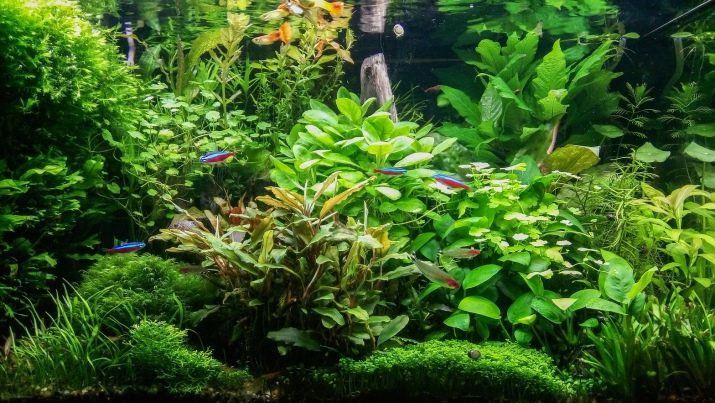
Equipment
Rhodostomuses are extremely sensitive to cleanliness and water quality, which means that powerful filters must be installed in the aquarium, as well as a compressor that will provide continuous aeration.
This will be useful not only for fish, but also for aquarium plants.
Once a week, water should be changed. - Each time you need to replace about a third of the total volume of the aquarium.
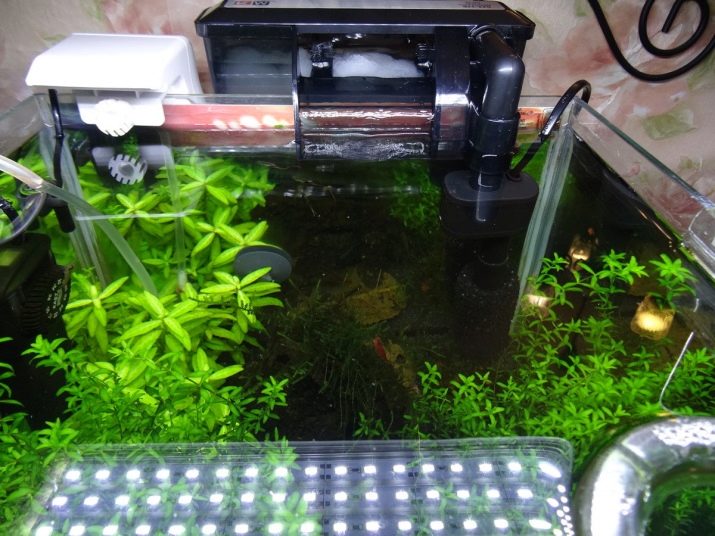
Shine
Rhodostomuses do not like bright light - in this situation they feel great excitement and anxiety, fish noticeably brighten, begin to rush from one corner to another and even try to jump out. To prevent fish from falling out of the aquarium it is best to cover it with a lid on top. Will become optimal soft dim light.
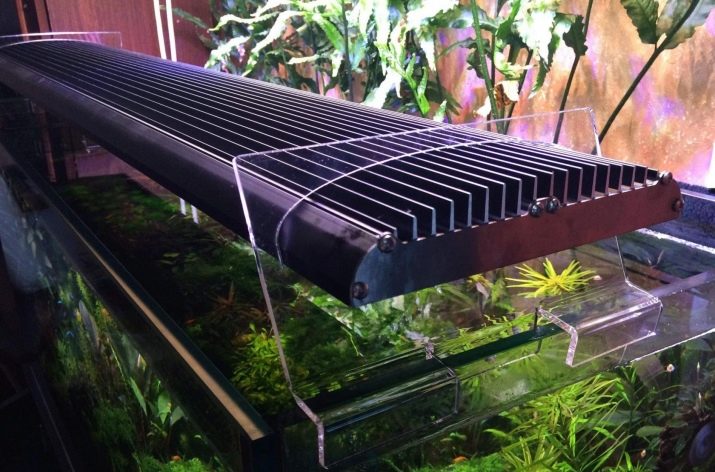
Feeding
That's what rhodostomuses don't have any problems with - it's with feeding. Red-nosed tetras eat absolutely all types of food that are offered for fish of this genus. They can be safely called omnivorous, so the diet usually includes:
- dry feed high quality in the form of granules or flakes (the best reviews of aquarists use products of the Tetra brands, as well as Sera for tropical fish);
- live feed - for example, brine shrimp artemia, frozen and shredded shrimp and other seafood, bloodworms, tubule.
Keep in mind that the feed must be very shallow, as this fish has a rather small mouth.
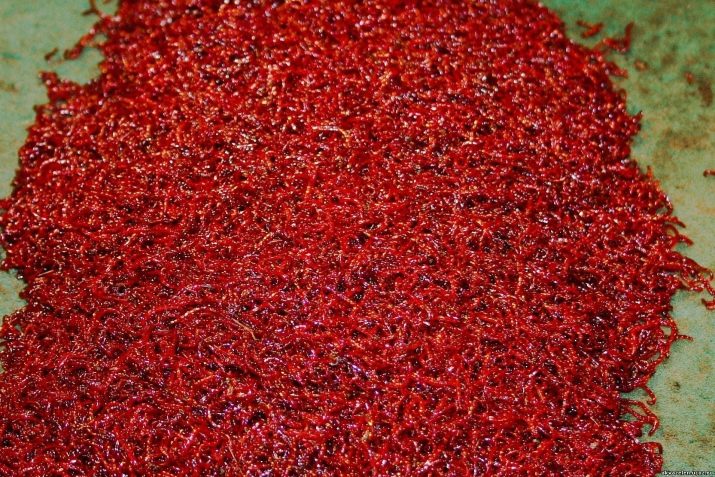
Rhodostomuses are fed several times a day in small portions. The optimal amount of food is determined empirically based on the fact that the proposed portion should be eaten in 3 minutes. If after this time the food remains - next time give your fish a little less, and if the proposed amount of food was eaten earlier - slightly increase the portion.
From time to time, these fish need to be offered plant dressings, for example, dandelion leaves.
If you do not feed them such food, the fish simply begin to bite into the leaves of algae. However, you do not have to collect greens yourself - in any pet store you can always find specialized feed for fish with plant components.
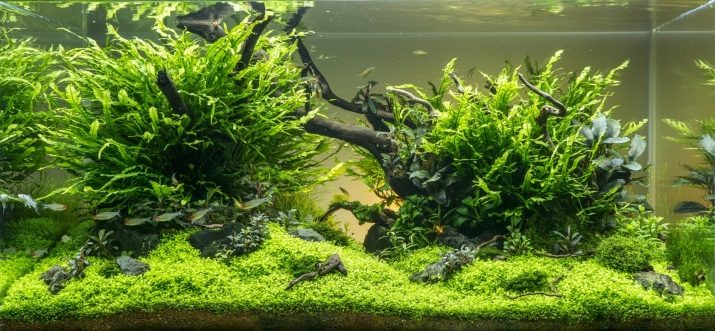
Breeding
It would seem that there is nothing super complicated in the care and maintenance of rhodostomuses, but the main difficulty lies in the breeding of this fish and the creation of optimal conditions for successful spawning.
The problem is that the reproduction of red-nosed tetras in a common artificial pond is not feasible, laying eggs is possible only in special spawning with dense vegetation, the use of pots is allowed.
Water must be prepared separately - it is necessary to mix distilled, as well as river and rain water in equal volumes, add a little peat broth, after which the prepared solution is filtered, poured into a spawning tank, and then settled.
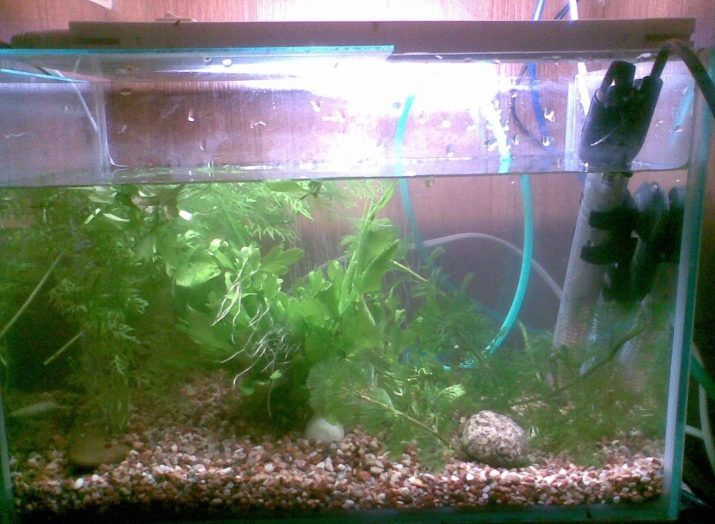
The water level in the spawning should be kept at around 10-12 cm, the optimum acidity is 6.5-8.5, the favorable temperature should rise to 27 degrees. The bottom must be lined with a nylon mesh.
After 2-3 days, the male and the female tetra are launched into the prepared container, within 1-2 days the fish adapt to these unusual conditions for them, after which the male begins to quickly chase the female and twist it with his body - this is when spawning begins and falls to the bottom about 6-10 eggs.
The couple repeats such manipulations several times until all the eggs are outside the mother's body. Fish noticeably brightens and hides in the thickets of aquatic vegetation. At this stage, the female and male can be moved back to the general aquarium, and the spawning itself can be slightly shaded.

The incubation lasts for 24 days, and after another 5 days the young growth already begins to move smartly in the water - at this moment you can remove the net and offer the fry a special starter feed “live dust”.
Keep in mind that they grow quite quickly, so in a month they already acquire all the external features characteristic of their variety.

Compatible with other fish
Rhodostomuses are rather peace-loving fish, therefore they adapted to exist in a pack of 7-10 individuals. Such pets look harmonious in artificial reservoirs with a large free space for swimming.
It’s best to pick other tetras as neighbors, they look especially impressive in tandem with black, red and blue neons, as well as parses.
Good neighbors will be dwarf cichlids, as well as the most peaceful catfish - corridors. If you want to create an effective biotope, then corridors and neons will suit the rhodostomus more than others, since these fish are neighbors in their natural habitat.
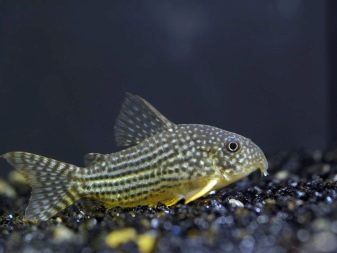
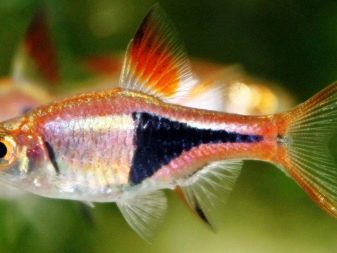
Possible content issues
With proper care and creating a comfortable environment, aquarium rhodostomuses are extremely rare, although sometimes there are exceptions. Red-nosed tetras can face the following problems.
- Fin rot - this pathology affects the caudal, anal and dorsal fins of the fish. The reason is maintenance in adverse conditions. Frequent water changes are usually used for treatment, and streptocide is also added to the reservoir.
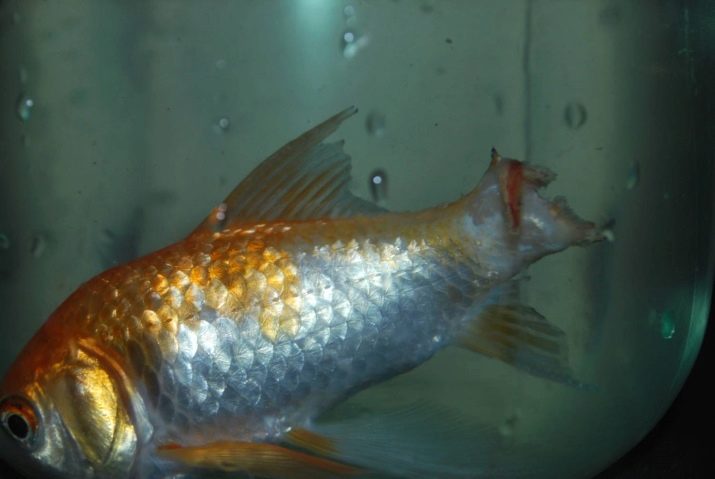
- Neon disease - This is a problem of an infectious nature, it manifests itself in the defeat of the skin and internal organs. The disease is not treated and, at the same time, spreads quite quickly throughout the aquarium, so infected rhodostomuses must be destroyed.
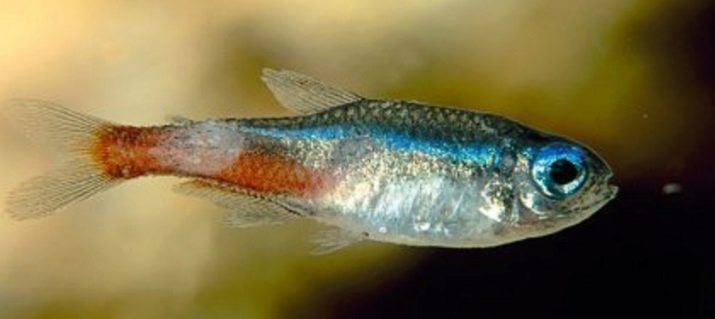
Rhodostomuses are active and motile small-sized fish. Despite its exactingness to the conditions of detention and the difficulty in breeding, the appearance of these representatives of aquatic living creatures can successfully diversify any artificial pond with a demonstration of an unusual color and extremely friendly character.
On the content of rhodostomuses see below.
